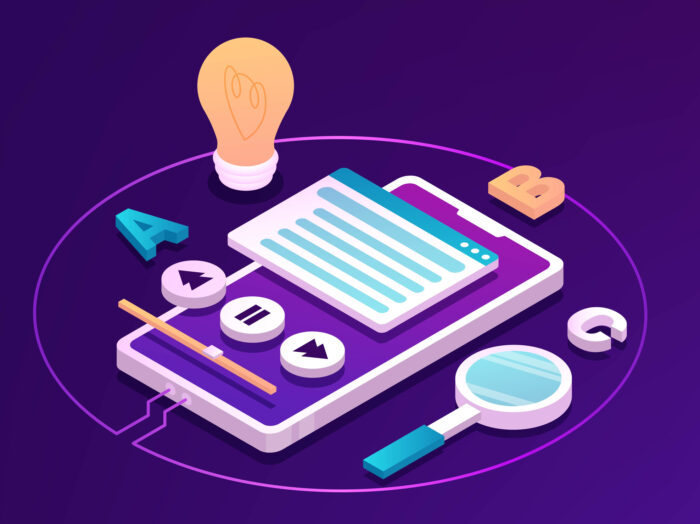Want to learn independently, at your own pace? Self-guided learning is a personalised way to learn new skills and managing your own learning process as an independent learner.
In this guide, we’re going to introduce the key principles of self-directed learning, the benefits of adopting this approach, and practical strategies for taking your education into your own hands.
Let’s dive in and find out more.
What is Self-Directed Learning?
Self-directed learning is where you manage your own learning process. This requires a lot of motivation and organisation as you’re essentially an independent learner. You can choose from different resources, topics, methods, and even set your own goals along the way. Everything is up to you.
The core principle of self-directed learning is autonomy. This is when the learner determines the path and the pace of learning. Of course, this is the opposite of the traditional classroom setups, where the teacher dictates what you need to know, when you’re going to learn it, and how.
Some examples of self-directed learning include:
- Teaching yourself a new language using online resources, books, or apps like Duolingo.
- Learning to play a musical instrument by watching videos on YouTube.
- Coding a website or app using online tutorials or self-paced courses.
- Preparing for a job interview by researching the company and the role, then practising your interview answers.
- Upskilling at work by reading industry publications, attending conferences, or taking online courses.
Why Self-Directed Learning Matters
Self-directed learning matters because it enables both personal and professional growth. Studies show that self-directed learning contributes to increased job satisfaction and workforce retention. Why? Because when people own their progress and learning journey, they become more invested in the company.
When applying for work, self-directed learning gives you a competitive edge, as it shows you’re self-motivated and driven to learn new things.
Example: John is an IT professional in a tech startup. John’s proactive self-directed learning approach involves mastering new programming languages and tools, enabling him to contribute more effectively to his team’s projects. His enhanced skills lead to job satisfaction, making him a valuable asset, and reducing turnover in the company.
How Does Self-Directed Learning Work?
Here’s a step-by-step guide for how self-directed learning can work in practice:
1. Assess your knowledge and skills
What do you already know about the topic you want to learn? What skills do you need to develop? Where are the gaps in your knowledge?
2. Set learning goals
What do you want to achieve by the end of your learning journey? Ensure your goals are specific, measurable, achievable, relevant, and time-bound.
3. Gather resources
What resources do you need to achieve your learning goals? This could include books, articles, online courses, tutorials, or mentorship from an expert.
4. Learn and apply
Once you have gathered your resources, get started! Crack open the book, click play on the video, or open up that app. As you go, try and apply what you’ve learned to the real world. See how the theories come into play in real life.
5. Reflect and assess
Once you’ve had a chance to apply what you’ve learned, take some time to reflect on your progress. Did you understand the theory fully? What areas do you need to improve on? Do you need to go back and take another look at a module or chapter?
What are the Four Stages of Self-Directed Learning?
As with any learning methodology, there is a structure to self-directed learning. By following these four basic stages, you’ll get the most out of your learning experience.
Step 1: Are You Ready to Learn?
Before you begin the journey, it’s vital to assess your readiness. Are you disciplined and organised enough to manage your own learning? Do you have the right mindset?
Conduct an honest self-evaluation to gauge your skills and attitudes. Consider your learning habits, existing support network, and past experiences. Do you need a dedicated workspace away from distractions? Do you need someone to keep you accountable? Factor these elements into your self-guided learning plan.
Step 2: What Do You Want to Learn?
Once you’re ready, it’s time to define your learning goals. What specific skills or knowledge do you want to acquire? Really hone in on the individual elements so you can make a concrete plan.
For example, instead of saying, “I want to learn to code,” say, “I want to be able to write a simple Python script to automate a task.” Then set yourself a reasonable deadline.
Step 3: How to Start Learning
After you’ve worked out your specific learning goals, you should develop a strategic learning plan. Identify the resources you’ll need, such as books, online courses, or mentors. Then, break down your goals into smaller steps and create a timeline.
As you learn, reflect on your progress and make adjustments to your plan as needed. It’s also important to celebrate your successes along the way, no matter how big or small. This will help keep your motivation high, which is a huge part of successful self-directed learning.
Step 4: Checking Your Progress
Keep tabs on your progress to track your goals. This could involve taking quizzes or ticking projects off your list. If you’re not meeting your goals, identify areas for improvement and adjust your learning plan accordingly.
What are the Benefits of Self-Directed Learning?
There are so many benefits of self-directed learning, but here are the four main ways it’ll help you grow:
Increased Adaptability
When you’re in charge of your own learning, you learn to anticipate changes to your plans. This adaptability is a sought-after skill in the world of work, especially if you can reprioritise and jump in on new projects on the fly.
Personalised Learning
One of the main points of self-directed learning is that it’s a personalised experience. While traditional learning works around what’s best for the group, this method allows you to focus on what works for you.
You can also only look at topics that interest you or are relevant. This enhances your engagement and retention, making your learning journey a lot more sustainable.
Builds Motivation and Discipline
Being your own instructor demands a high level of organisation and discipline. Time management, goal-setting, and self-assessment become second nature, and are easily transferable to other areas of your life.
Improves networking and collaboration skills
Despite the name, self-directed learning doesn’t have to be a solo endeavour. Along the way, you might consult experts, join online forums, or partner with peers with similar interests. These groups enhance your networking and collaborative skills, while enriching your learning process.
Problems With Self-Directed Learning and How to Solve Them
Self-directed learning, like with any learning method, it’s not without its issues. Here’s how to solve common problems with independent learning.
Struggling with Motivation
If you’re struggling with motivation, break your goals into smaller, digestible tasks, and give yourself a small reward after you complete them. You can also enlist the support of a learning partner or mentor for additional motivation and guidance.
Difficulties in Time Management
To help with time management, allocate dedicated time slots for self-directed learning and stick to this schedule as closely as possible. Minimise distractions during these periods, giving yourself short breaks, but avoid veering off course.
Uncertain About What to Learn
If you’re not sure what to learn, think about your personal and professional aspirations. Identify which skills or knowledge areas you’ll need to make this happen and hone in on those.
Feeling Isolated
When you’re feeling isolated, it’s a good idea to engage with online communities or social media groups centred around self-directed learning. Participate in workshops or meetups, or consider finding a learning partner or mentor for collaborative study.
Lack of Accountability
To combat drifting off-course, you need to be accountable and there are a few ways to do this.
- Set deadlines and monitor your progress.
- Share your learning intentions and milestones with a reliable friend, family member, or colleague.
- Reward yourself for maintaining consistent progress.
What’s the Future of Self-Directed Learning?
As technology plays an increasingly important role in our lives, self-directed learning is only going to get more exciting and immersive. From app-based learning to VR to more interactive video content on-the-go, the future of self-directed learning looks bright.
AI and Virtual Reality
AI-powered technologies, like conversational interfaces and chatbots, can be useful virtual learning companions. Already, language learning apps like Duolingo are using AI chatbots for conversational practice and pronunciation feedback. Learners will engage in real-time conversations, ask questions, and receive immediate feedback, mimicking the role of a real human tutor.
Personalisation
Enhanced personalisation is going to be an extension of AI for self-directed learning, but it’s a huge boost to the industry. Machine learning algorithms will analyse learners’ preferences, strengths, and weaknesses to curate bespoke content and recommendations.
Enhanced Assessment and Feedback
Algorithm-driven assessment tools will analyse learner responses more holistically and provide detailed feedback on strengths and weaknesses in a matter of seconds. This is ideal if you’re not sure if you’re on track, or want to have a concrete sense of where your learning is up to.
Measurement and credentialing
For many self-directed learning experiences, there aren’t certificates or official credentials at the end. However, using AI and blockchain technology, you can create secure and verifiable digital credentials, such as badges and certificates. These credentials will become the standard means of showcasing skills and knowledge to potential employers and other stakeholders. Think about it the way that LinkedIn has endorsable skills at the moment, but on a larger scale.
Organisational integration
Organisations will increasingly recognise the value of self-directed learners within their workforce. L&D programs are already evolving to support and encourage self-directed learning, aligning it with company-wide goals.
Unlock Your Potential with Self-Guided Learning
The ability to direct your own learning is not just a skill, but a mindset that can serve you in every aspect of life. Mastering the skills and self-discipline required will help any team be more knowledgeable, adaptable, and resilient.
With Omniplex Guide’s huge suite of in-app learning and development tools, self-guided learning is a breeze. Open up any piece of software or website and you can have step-by-step clickable guides and tutorials at your fingertips, making self-directed learning simple and effective for your entire team.
Find out how Omniplex Guide can help your team, by getting in touch with our expert team or booking a free product tour.




